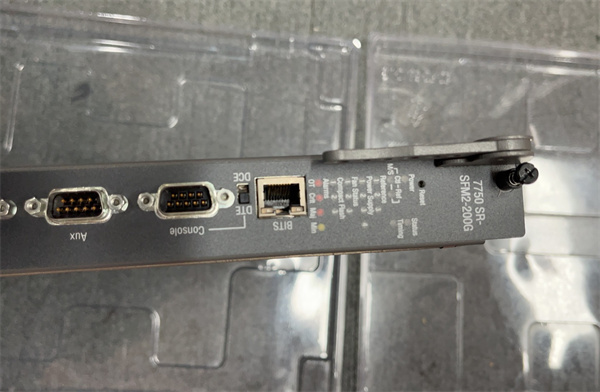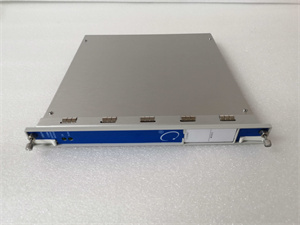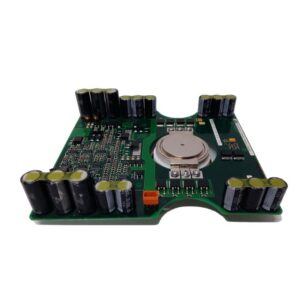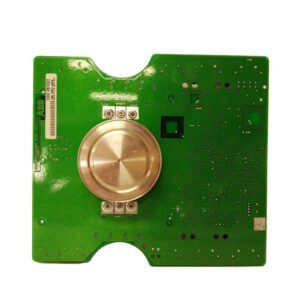Description
Product Overview
The Alcatel-Lucent SFM2-200G is a high-availability Switching Fabric Module engineered for Alcatel-Lucent Enterprise’s (ALE) OmniSwitch 9900 series chassis, delivering non-blocking 200 Gbps per-slot bandwidth for mission-critical data center and enterprise core networks. As the central nervous system of the OS9900 platform, this module enables wire-speed communication between all line cards (e.g., OS9-GNI-U24) and supervisor modules while ensuring deterministic latency below 10 µs. The Alcatel-Lucent SFM2-200G features fully redundant fabric planes with hitless failover capabilities, eliminating single points of failure for carrier-grade reliability. Its distributed architecture scales to support up to 1.6 Tbps aggregate throughput per chassis, making it ideal for bandwidth-intensive applications like real-time analytics, network virtualization, and high-frequency trading. Designed for seamless integration into ALE’s Application Fluent Network vision, the Alcatel-Lucent SFM2-200G provides the foundation for software-defined networking (SDN) with programmable QoS and telemetry capabilities.
Technical Specifications
| Parameter Name | Parameter Value |
| Product Model | Alcatel-Lucent SFM2-200G |
| Manufacturer | Alcatel-Lucent Enterprise (ALE International) |
| Product Type | Switching Fabric Module |
| Fabric Capacity | 200 Gbps per slot (full duplex) |
| Aggregate Throughput | 1.6 Tbps per chassis |
| Latency | <10 µs (line card to line card) |
| Fabric Planes | 2 (Active/Active redundant) |
| Failover Time | 0 ms (hitless) |
| Compatible Chassis | OmniSwitch 9900 (OS9900-L24C/L48C/L72C) |
| Hot-Swappable | Yes |
| Power Consumption | 180W (typical) |
| Operating Temperature | 0°C to 45°C (32°F to 113°F) |
| Management | Integrated with OS9-SUP6 supervisor |
| Certifications | NEBS Level 3, RoHS, CE, UL |

SFM2-200G
Main Features and Advantages
Non-Blocking Performance: The Alcatel-Lucent SFM2-200G guarantees full wire-speed connectivity between all 48 line card slots, preventing oversubscription even during peak traffic loads. Its distributed crossbar architecture delivers consistent sub-10µs latency for financial and HPC applications.
Carrier-Grade Redundancy: Dual active fabric planes continuously synchronize data streams. If one plane fails, traffic instantly shifts to the surviving plane with zero packet loss – critical for NFV and VoLTE environments.
SDN Integration: Supports OpenFlow 1.3+ and REST APIs for programmable traffic steering. In-band telemetry provides real-time flow visibility without external probes.
Energy Efficiency: Shared buffer architecture reduces power-per-bit by 40% compared to legacy designs. Adaptive clock throttling cuts energy use during low-traffic periods.
Seamless Scalability: Combines with Alcatel-Lucent SFM2-200G peers in multi-chassis stacks (via OSSF) to create single logical fabrics exceeding 25 Tbps.
Application Field
The Alcatel-Lucent SFM2-200G enables next-generation infrastructure:
Cloud Data Centers: Forms spine-layer fabrics for VMware/OpenStack environments with VXLAN/NVGRE support.
Financial Trading Networks: Delivers nanosecond-accurate timing (PTPv2) for algorithmic trading platforms.
Telecom Core Networks: Handles 5G UPF traffic with guaranteed QoS for network slicing.
Government Secure Networks: Implements MACsec-256 encryption across fabric interconnects.
Media Production: Supports uncompressed 4K video routing with jitter <100ns.
Related Products
Alcatel-Lucent OS9-SUP6: Supervisor module managing SFM2-200G operations.
Alcatel-Lucent OS9-GNI-U24: 24-port GigE line card leveraging SFM2-200G fabric.
Alcatel-Lucent OS9-XNI-U4X: 100G line card for spine interconnects.
OmniSwitch 9900-L72C: 72-slot chassis hosting multiple SFM2-200G modules.
Alcatel-Lucent SFM2-400G: Next-gen 400G fabric module for OS9900-E series.
ALE OmniVista 2500: Network management for SFM2-200G performance monitoring.
OS9900 Fabric Extender: For multi-chassis fabric unification.
Installation and Maintenance
Pre-installation preparation: Verify chassis compatibility and dedicated fabric slots. Ensure dual supervisors are active. Ground chassis and use ESD protection. Prepare firmware bundle matching supervisor version.
Maintenance recommendations: Monitor fabric synchronization status via CLI (show chassis fabric). Replace modules using hot-swap procedure: 1) Deactivate target SFM2-200G in software 2) Wait for “OK to remove” LED 3) Pull ejector levers. Always replace in redundant pairs during planned maintenance. Update firmware concurrently with supervisor modules.
Product Guarantee
ALE International provides a lifetime hardware warranty for the Alcatel-Lucent SFM2-200G, including 24/7 technical support and next-business-day advanced replacement. Fabric-specific diagnostics are integrated into OmniVista 2500 NMS, enabling predictive maintenance. Firmware updates maintain compatibility with new line cards and SDN controllers throughout the product lifecycle.



